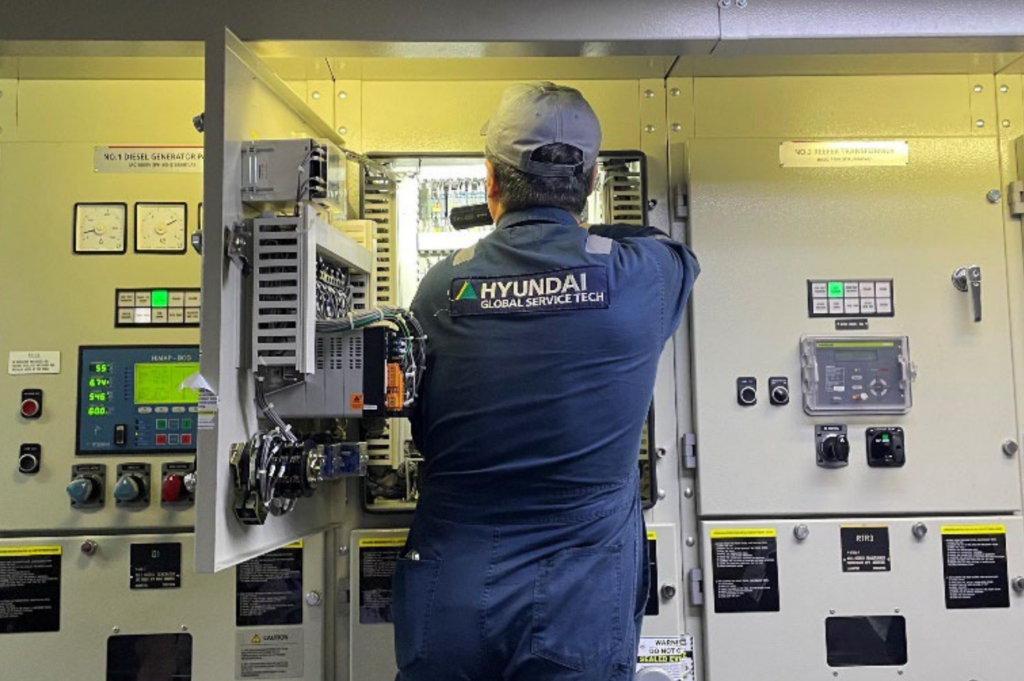An engineer inspects the container ship Dali in April, after it slammed into the Francis Scott Key Bridge. Photo courtesy National Transportation Safety Board.
A new report says a loose wire in the container ship Dali could have triggered the blackout that caused the crew to lose control of the ship and sent it careening into the Francis Scott Key Bridge in the early morning hours of March 26.
The report Wednesday from the National Transportation Safety Board details of series of examinations and tests of Dali systems by a team of engineers over the course of the month of April, when the ship was still pinned under the wreckage of the bridge.
The team — which included engineers from the NTSB, from the ship’s operators and from Hyundai Heavy Industries, which built the ship, among others — determined that the “loosely connected” cable could create an open circuit that would trigger blackout.
When they tested their theory by disconnecting the cable, “all equipment powered by the Low Voltage (440V) Switchboard, including operating lights throughout the vessel, immediately lost power,” which only came back on after about 10 seconds.
The Dali was leaving the Port of Baltimore early on March 26 when it suddenly lost power as it was approaching the Key Bridge, which crosses over the shipping channel into and out of the port. Instead of passing under the bridge, the drifting, 984-foot Dali slammed, fully loaded, into one of the bridge’s piers.
Toll authority approves initial Key Bridge replacement contract
The crash caused the center span of the bridge to collapse in a matter of seconds, killing six of the eight members of a road crew that were working on bridge repairs at the time and sending tons of debris onto the ship and into the Patapsco River below.
Besides cutting an important route for more than 30,000 commuters, and for truckers looking to bypass the center of the city, the debris also clogged the Patapsco River, blocking shipping traffic in and out. It closed the Port of Baltimore for months, throwing thousands of workers off the job and hitting businesses in the region that rely on the port.
It took more than two months for the coordinated efforts of state and federal agencies, and private contractors, to remove more than 50,000 tons of debris from the Patapsco and reopen shipping lanes to Baltimore. The Dali left in late June and headed for Norfolk, where hit was to undergo further repairs.
While the port was reopened after just two months, state and federal officials expect it will take years to replace the Key Bridge. But the state last month awarded a $1.2 billion contract to Nebraska-based Kiewit Infrastructure, which could begin construction by next spring, around the one-year anniversary of the crash.
Plans for the replacement bridge are still being developed, but state officials have said it will be higher, and its center span wider, than the old bridge, to allow for even larger container ships that are expected in the future.
Bridge replacement is expected to ultimately cost as much as $1.7 billion. In the hours after the crash, President Joe Biden pledged that the federal government would pick up 100% of the cost of the project, and bills have been introduced in Congress to do just that. But those bills have been stuck in committed so far.

